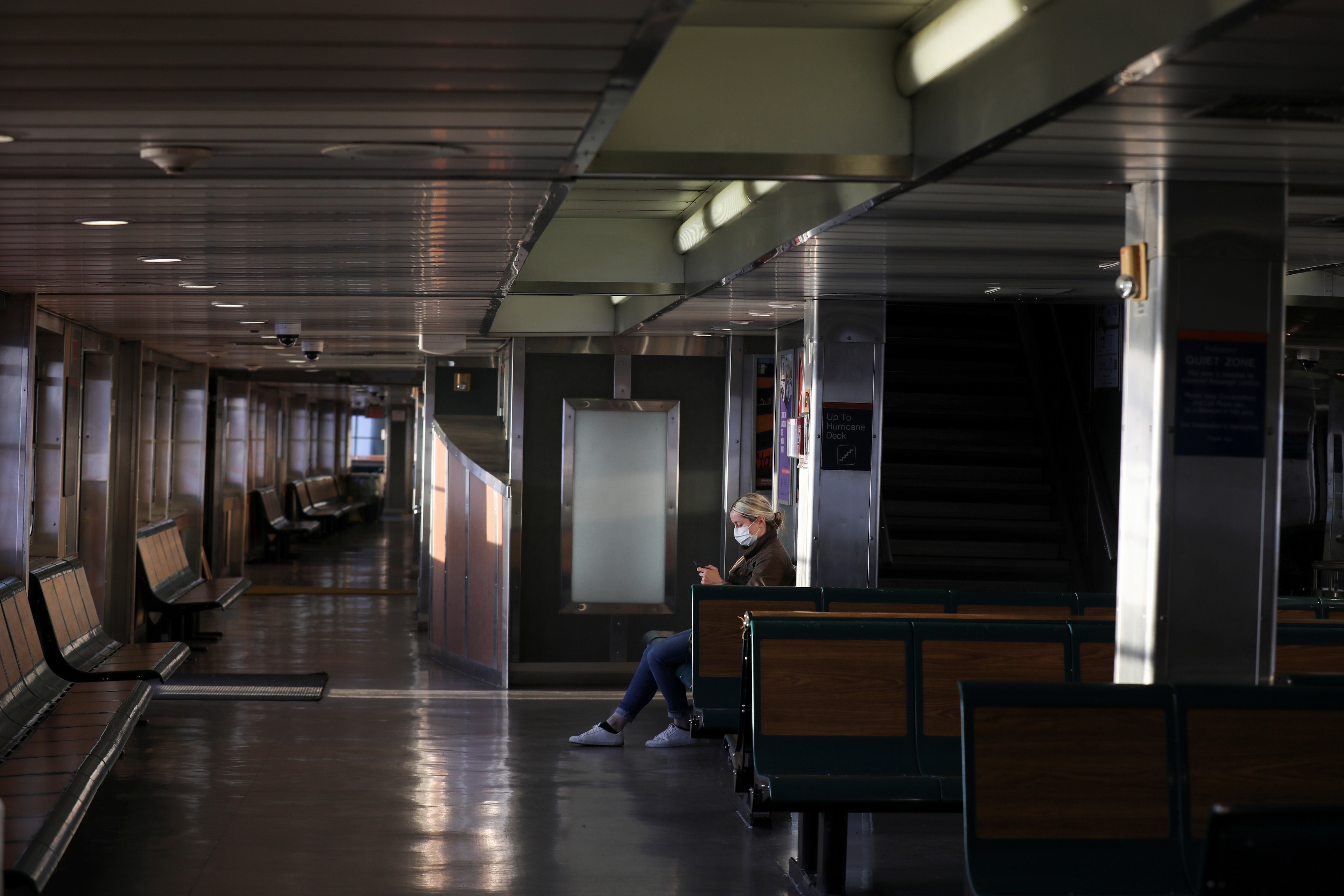New York is the epicentre of America's coronavirus outbreak. How is the city coping?
Nearly half of all of the United state's coronavirus cases are in New York state.
Image: REUTERS/Stephen Yang
Stay up to date:
Global Health
- The US has more COVID-19 infections than any other country.
- Almost half of these are in New York state.
- New York City is in the coronavirus firing line.
“I live in what is usually a really noisy neighborhood,” says Stéphanie Thomson, New York resident and a former editor at the World Economic Forum. “You normally hear lots of traffic, car horns, people shouting in the street, construction work. All you hear now are sirens.”
Almost half of all COVID-19 infections in the US are in the state of New York. Of the 1,307 coronavirus deaths the US has experienced, 466 have taken place there, too. But the city of New York has been hit hardest.
The number of coronavirus-related deaths in the city reached 365 on Thursday, up from 280 the day before, with more than 23,000 confirmed cases in total. The city that never sleeps is now living under lockdown. A state of emergency has been declared that means all non-essential businesses have been forced to close.
“I think New Yorkers were quite slow to realize just how serious this was,” says Thomson. “We had our first confirmed coronavirus case on 1 March and for the first two weeks, life seemed to continue somewhat normally.”
“I have an immuno-compromised baby at home, so I was following all the developments in Italy and beyond really closely, which meant I had a better sense than most of how bad it might get, and how fast. On 12 March, I went to the supermarket to do a big shop. I was wearing a mask and gloves, and I sanitized everything I came into contact with. I got so many funny looks from people. The last time I went for a walk, a week ago, everyone was wearing masks.”
Grocery stores are among the essential businesses that can remain open, along with banks, food producers, healthcare services and pharmacies, laundry facilities, and even bicycle repair shops.
The mood in the city started to change on 13 March, according to Thomson. “Rumours started circulating that the authorities were going to be shutting down businesses. By that evening, there were lines to get into all the big supermarkets across the city and it was impossible to buy cleaning supplies, toilet paper or bottled water.”
Since the huge spike in infections, other states have insisted visitors from New York state be quarantined for at least 14 days, or even stay away altogether.
Even though parks and playgrounds are also still open, many people - like millions of others in countries around the globe - are limiting their exposure to the outside world. Social distancing rules mean people venturing out must stay at least two metres apart. Although for the small number of commuters left travelling to work every day that is unlikely to be a problem, parts of New York remain busy.
“I've heard neighbours say that Prospect Park is still packed with people, which is probably why the authorities are now threatening to close down all the parks,” Thomson says.
“It's hard because most New Yorkers don't have any outdoor space, and you start getting cabin fever if you stay inside for too long. There's talk about them closing down the roads to traffic so that people can go for walks and still stay 6 feet away from others. Sooner or later the authorities have to do something to help people get out safely for a walk each day. ”

The city authorities have set up a food delivery programme called GetFoodNYC for people who are classed as vulnerable and food-insecure. Schools have been closed until at least 20 April. But that was a decision that raised concerns about how children from poorer backgrounds might cope, Thomson explains.
“A quarter of NYC children are from food-insecure families, so school is not just where they learn, it's where they get free meals. In the end, they set up a system whereby families can go to schools and get free packed lunches to take home.”
More than 100,000 New York City schoolchildren live in shelters and temporary accommodation. Meanwhile, there are wider concerns about how COVID-19 might impact the city’s homeless population.

New York Governor Andrew Cuomo has received a significant amount of praise for his response to the crisis, a sentiment echoed by city-resident Thomson.
“I feel really lucky that we have a governor like Andrew Cuomo in New York. His daily press briefings have become must-watch TV. Cuomo has very clearly said that what matters most is the health of New Yorkers, and he seems to be doing everything he can to protect that, even if that means the economy takes a hit. You can rebuild an economy, but you can't bring back lost lives.”

Don't miss any update on this topic
Create a free account and access your personalized content collection with our latest publications and analyses.
License and Republishing
World Economic Forum articles may be republished in accordance with the Creative Commons Attribution-NonCommercial-NoDerivatives 4.0 International Public License, and in accordance with our Terms of Use.
The views expressed in this article are those of the author alone and not the World Economic Forum.
Forum Stories newsletter
Bringing you weekly curated insights and analysis on the global issues that matter.
More on Health and Healthcare SystemsSee all
Ti Hwei How
May 7, 2025
Gaurav Ghewade
May 6, 2025
Camilla Macapili Languille
May 5, 2025
Sarthak Das
May 1, 2025
Shyam Bishen
April 28, 2025




